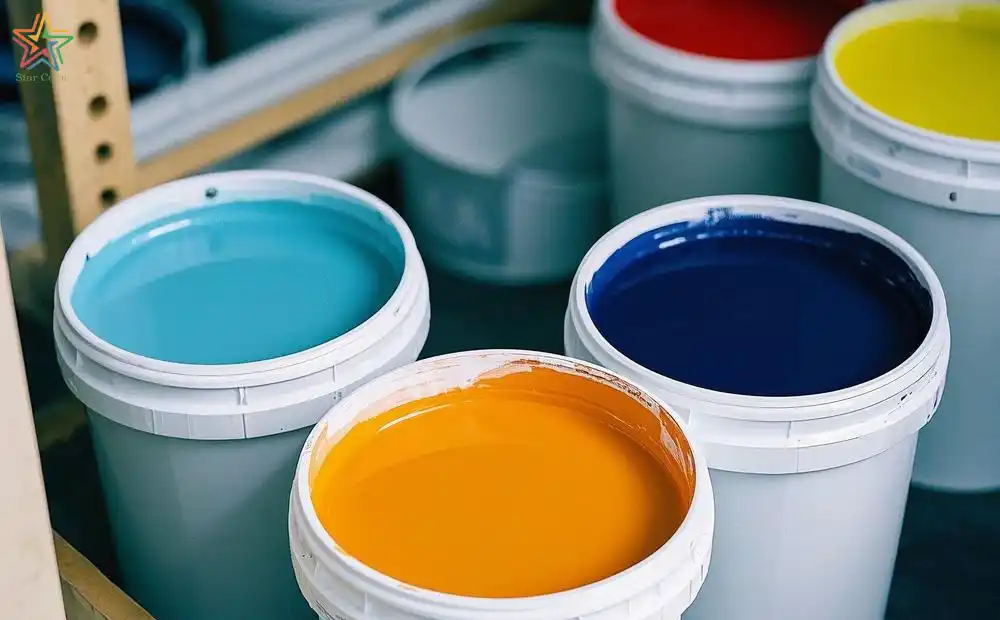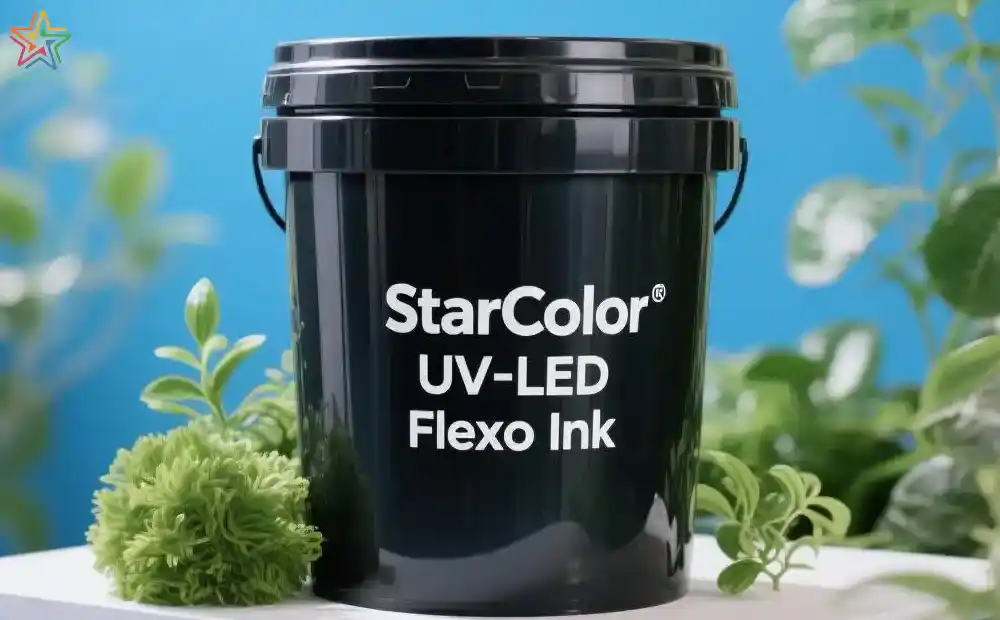Analysis of Flexographic Printing Ink types
Date: May 12 2025 From: Star Color Views:
Flexographic printing is an efficient, flexible, and environmentally friendly printing method, and it is also one of the four major printing technologies nowadays, holding a significant position in the packaging and printing industry. Ink, as a core element of flexographic printing, directly impacts printing quality and production efficiency. According to the 2024 relevant flexographic printing technology report (with a sample size of 1,200 enterprises), flexographic printing inks are mainly classified into five major systems: water - based, solvent - based, UV, electron - beam (EB), and bio - based. The following is an in - depth analysis of these ink systems.
I. Basic Classification and Technical Matrix
| Ink Type |
Solid Content |
Drying Method |
VOC Emission (g/L) |
Curing Energy Consumption (kWh/kg) |
| Water - based Ink |
40 - 50% |
Hot air/Infrared |
≤50 |
0.18 |
| Solvent - based Ink |
25 - 35% |
Volatile drying |
300 - 500 |
0.35 |
| UV Ink |
99%+ |
Ultraviolet curing |
0 |
0.28 |
| Electron - beam (EB) Ink |
100% |
High - energy electron beam |
0 |
0.42 |
| Bio - based Ink |
45 - 60% |
Oxidative polymerization |
≤20 |
0.15 |
Inks of different types exhibit significant differences in solid content, drying methods, VOC emissions, and curing energy consumption. These parameters directly determine the applicable scenarios and environmental performance of the inks.

II. Analysis of the Water - based Ink System
1. Technical Characteristics
The pH value of water - based inks is typically controlled between 8.5 and 9.5, adjusted with ammonia water to maintain ink stability. In terms of viscosity, when measured with a DIN 4# cup at 25°C, the viscosity ranges from 20 to 35 seconds. This viscosity value ensures good transfer and delivery of the ink on printing equipment. In adhesion tests, according to the ASTM D3359 standard, water - based inks can reach a 3B level on PET materials and a 4B level on paper, meeting the requirements of various printing substrates.
2. Environmental Certifications
Water - based inks have obtained several authoritative certifications due to their excellent environmental characteristics. In the field of food contact, they comply with the FDA 21 CFR 176.170 standard, making them safe for food packaging printing. They have also passed the EU EcoLabel certification, which provides strong support for their market promotion.
3. Application Scenarios
In paper printing, the printing speed of water - based inks can reach ≥300 m/min, meeting the needs of large - scale and high - efficiency production. When printing on plastic films, 5 - 8% adhesion promoters need to be added to enhance adhesion. The Zhongzhixing brand's water - based inks have performed outstandingly in the market and are highly favored by printing enterprises.

III. Technical Parameters of Solvent - based Inks
1. Formulation Structure
Solvent - based inks are composed of components such as resins, solvents, and pigments. Resins account for 20 - 25%, mostly using polyamide systems, endowing the inks with film - forming properties and adhesion capabilities. Solvents account for as high as 60 - 70%, mainly using a mixture of ethanol and ethyl acetate to adjust the ink viscosity and drying speed. Pigments account for 10 - 15%, using highly dispersed nanoparticles (D50≤0.5μm) to ensure vivid ink colors and clear printing.
2. Requirements for the Drying System
The drying of solvent - based inks has high requirements for equipment. During the drying process, the wind speed needs to be controlled at 20 - 25 m/s with a three - stage gradient setting. For film printing, the drying temperatures are 50°C→70°C→90°C in sequence; for paper printing, they are 40°C→60°C→80°C, ensuring the rapid volatilization of solvents and the quick drying of inks.
3. Industry Restrictions
Due to the high VOC emissions of solvent - based inks, they are strictly restricted by the industry. The SCAQMD Rule 1135 in the United States stipulates that solvent emissions should be ≤50 tons per year, and the EU VOC Directive 2010/75/EU requires the installation of RTO incineration devices to handle organic waste gas emissions, prompting printing enterprises to seek more environmentally friendly ink alternatives.
IV. Innovative Technologies of UV/EB Inks
1. Performance Comparison
UV inks and EB inks have their own advantages and disadvantages in performance.
| Index |
UV Ink |
EB Ink |
| Curing Depth |
≤200μm |
500μm+ |
| Curing Speed |
100 - 150 m/min |
300 - 500 m/min |
| Equipment Investment |
$250,000 per unit |
$800,000 per unit |
| Applicable Substrates |
Films/Labels |
Thick cardboard/Metal foils |
2. Photoinitiator Systems
UV inks rely on photoinitiators to initiate the curing reaction, commonly using a system of TPO (2.5 - 3.5%) + ITX (0.5 - 1%). EB inks, on the other hand, do not require photoinitiators and achieve curing directly through the ionization reaction of high - energy electron beams. In recent years, the LED - UV dual - wavelength system of 395nm/385nm, as an alternative to mercury lamps, has become a new trend in the development of UV ink technology.

V. The Sustainable Development Path of Bio - based Inks
1. Raw Material Composition
Bio - based inks use renewable biomass as raw materials. Soybean oil accounts for 30 - 40%, but its oxidative drying speed is slow, and drying accelerators need to be added. Cashew nut shell liquid accounts for 25 - 35%, which can improve the water resistance of the ink. Cellulose derivatives account for 15 - 20%, which can improve the leveling property of the ink, but the cost is relatively high.
2. Carbon Footprint Comparison
Compared with traditional inks, bio - based inks have significant advantages in carbon footprint. The carbon footprint of traditional inks is 3.2 kg CO₂eq/kg, while that of USDA - certified bio - based inks is only 1.8 kg, greatly reducing the environmental impact of the printing industry and conforming to the development trend of green printing.
In conclusion, the four major systems of flexographic printing inks each have their own characteristics and play important roles in different application scenarios. With the improvement of environmental requirements and the development of printing technology, environmentally friendly inks such as water - based and bio - based inks, as well as innovative technologies of UV/EB inks, will become the future development directions of flexographic printing inks.
 RU
RU
 EN
EN
 CN
CN



